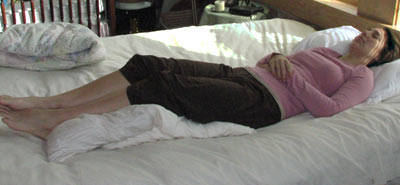Spinal stenosis emerges as a critical condition within the realm of spinal health, characterized by the narrowing of the spinal canal which leads to a compression of the spinal cord and nerves. This definition lays the groundwork for understanding the multifaceted nature of spinal stenosis, including its symptoms, causes, and the impact it has on individuals’ daily lives. The condition’s explanation delves into the anatomy of the spine, revealing how changes within the spinal canal’s structure can significantly affect nerve function. Symptoms vary widely, depending on which part of the spine is affected—lumbar, cervical, or thoracic—each presenting its unique set of challenges and discomforts. As we explore the causes and contributing factors of spinal stenosis, it becomes evident that both degenerative processes and external pressures play significant roles in its development.
Understanding spinal stenosis requires a closer look at its symptoms, which range from tingling, numbness, and pain to more severe forms of weakness, affecting different areas of the body based on the stenosis location. The causes of spinal stenosis are as varied as its symptoms, with herniated disks, bone spurs, and repetitive motions being among the common culprits. These factors contribute to the narrowing of the spinal spaces, exerting pressure on the spinal nerves and leading to the condition’s hallmark symptoms. Additionally, recognizing the risk factors and demographics most affected by spinal stenosis is crucial for early detection and intervention. Predominantly seen in older adults, the condition highlights the importance of age-related changes in spinal health, though lifestyle and genetic predispositions also contribute to its onset. As we delve deeper into the specifics of spinal stenosis, including its treatment options, prevention strategies, and the nuances of living with the condition, a comprehensive approach to management and care becomes increasingly important, especially for those requiring in-home care and support.
General Overview of Spinal Stenosis
Symptoms of spinal stenosis can vary significantly depending on the area of the spine that’s affected—lumbar, cervical, or thoracic. Each area presents its unique set of challenges and symptoms, from lower back pain in lumbar stenosis to neck pain in cervical stenosis, and even mid-back pain in thoracic stenosis. Recognizing spinal stenosis risk factors and demographics is essential for early detection and treatment. The condition predominantly affects older adults, but certain lifestyle factors and genetic predispositions can increase the risk across various demographics. Treatment options and approaches for spinal stenosis range from conservative measures, such as physical therapy and medication, to more invasive procedures like surgery, depending on the severity and progression of the condition. Prevention strategies and practices, including regular exercise and maintaining a healthy posture, play a key role in mitigating the risk of developing spinal stenosis.
Specific Concerns and Comparisons
The distinction between lumbar spinal stenosis and its counterparts, cervical and thoracic stenosis, highlights the importance of targeted treatment strategies. Lumbar spinal stenosis, for instance, often leads to lower back pain and sciatica, while cervical stenosis can cause neck pain and neurological symptoms. Understanding the differences between nerve compression and spinal stenosis is vital for accurate diagnosis and treatment, as these conditions, though related, require different management approaches. Similarly, distinguishing spinal stenosis from other back pain conditions ensures that patients receive the most appropriate care. For those requiring surgical intervention, understanding the various spinal stenosis surgery procedures and types is crucial for informed decision-making.
Informational Insights on Spinal Stenosis
The spinal canal’s anatomy and function are central to comprehending how spinal stenosis develops and affects the body. This condition’s development process and stages can offer insights into the long-term outlook for spinal stenosis patients, which varies based on the severity of the condition and the effectiveness of the chosen treatment plan. Management tips for living with spinal stenosis emphasize the importance of in-home care strategies, which can significantly improve quality of life for those affected. These strategies may include modifications to daily activities, personalized exercise programs, and ergonomic adjustments to minimize pain and discomfort. Additionally, staying abreast of the latest research advancements in treating stenosis is essential for both patients and caregivers, as new therapies and surgical techniques continue to evolve, offering hope for more effective management and potential relief.
Conclusion: Navigating Spinal Stenosis with Comprehensive Care
In wrapping up our exploration of spinal stenosis, it’s clear that tackling this condition demands a holistic and informed approach. Effective management of spinal stenosis not only hinges on a thorough understanding of its underlying causes and symptoms but also on the implementation of a comprehensive treatment strategy tailored to the individual’s specific needs. From conservative measures like physical therapy and medication to more invasive options such as surgery, the treatment landscape for spinal stenosis is diverse, offering hope and relief to those affected. Moreover, the role of in-home care cannot be overstated, especially for individuals navigating the challenges of spinal stenosis alongside other conditions such as elder care needs or dementia. In-home care strategies, including personalized exercise programs, ergonomic adjustments, and lifestyle modifications, play a pivotal role in enhancing quality of life and promoting independence, allowing individuals to manage their symptoms effectively within the comfort and familiarity of their own homes.
As we look toward the future of spinal stenosis care, the importance of prevention and ongoing education becomes increasingly apparent. Engaging in regular physical activity, maintaining good posture, and being mindful of body mechanics are key strategies in preventing the onset or worsening of spinal stenosis symptoms. Additionally, staying informed about the latest research advancements and treatment options is crucial for both patients and caregivers, as the field of spinal health continues to evolve. By fostering a proactive and informed approach to spinal stenosis management, individuals can not only alleviate their current symptoms but also safeguard their spinal health against future complications. Ultimately, the journey through understanding, treating, and living with spinal stenosis is a testament to the resilience of those affected and the potential for improved outcomes through comprehensive care and support.




